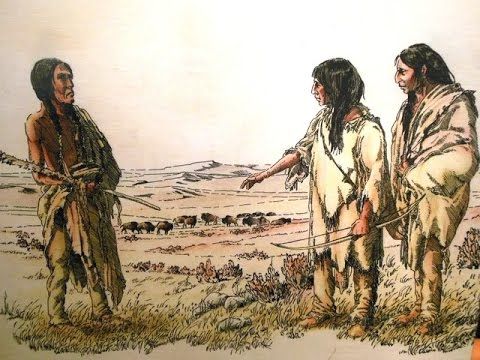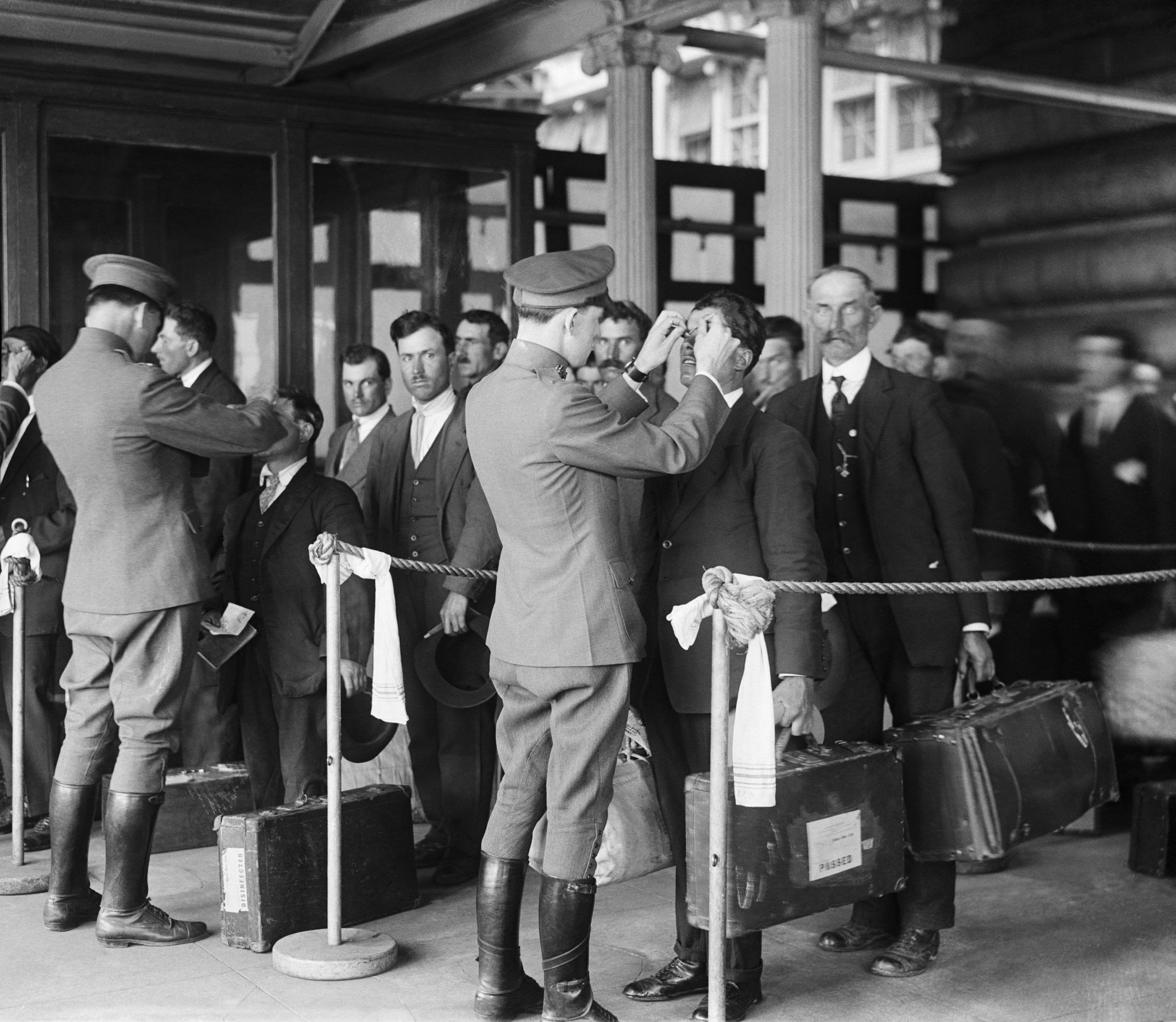When Did My Ancestors Come to America?
I was born and raised in England, moving to the United States in my late 30s and making a home here with my American wife. Preceding me were millions of other immigrants over the years some of whom are the ancestors of modern day Americans.
As an immigrant myself I know when my line came to the United States although I was not the first of my extended family to make this journey. Around 1873 my 3x great Uncle John Prince moved to the United States with his family.
Ancestry is Our Top Recommendation
If you love genealogy and family history research, then you must know Ancestry. They are the best way to discover the rich stories of your family!
With over 30 billion (seriously!) records in their database, you can research your family and discover amazing details you may never have known about your ancestors.
With a 14-day free trial, it's very easy to get started and discover your past!
Get Started →This is something I only discovered recently and even more surprising I found that this distant uncle of mine was buried less than 5 miles from where I first lived in the United States. Had my 3x great grandmother, John’s sister also moved to the United States I would have likely been born American.
There are millions of Americans who perhaps know their family's heritage and are aware that at some point their families were immigrants. Surprisingly though, few are aware of when their family first arrived. In this post we will discuss a little of the history of Immigration to the United States and how we can try and discover when our ancestors first arrived.
History of Immigration to the American Continents
The First People
At the risk of reminding people of some hard truths, if we are to talk about Immigration to the North and South American continents we have to acknowledge who arrived first. During the last ice age approximately 40,000 years ago much of the planet's water was locked up in ice. This meant that the area we know today as the Bering sea between Russia and Alaska was actually connected.

This so-called land bridge allowed huge herds of animals to cross from Europe and Asia over into the Americas. Following along behind them came waves of nomadic tribes originating from what is now Siberia. Tests on the remains of an ancient skeleton found in Siberia showed that modern day Native Americans share DNA with this individual.
Those with Native American Ancestry then have ancestors who arrived in the Americas over 40,000 years ago. Obviously we would never be able to pinpoint exactly when they arrived and who they were but we do know they have been here for a very long time.
The Earliest Europeans
There has been theoretical indication of early Europeans arriving in the Americas prior to Columbus but there is only one that has essentially been confirmed. It is known that around 985 AD the Viking Eric the Red founded a colony on Greenland.
Eric's son Lief Ericson made his way to what is now modern day NewFoundland establishing several small colonies around 1000 AD. These colonies were eventually abandoned and it is unknown if any of the Norse remained in the Americas.
There are rumors of blue eyed Native American tribes so there is a remote possibility that some Norse settlers integrated with the native population. This again is not something we can track or prove.
Successful Colonization
After Columbus' arrival in 1492 a steady stream of European exploration began which initially was based on trade. Gradually however the Europeans would start to make more permanent homes by creating settlements.
The principal European nations initially included Spain, England and France with the Netherlands and Sweden coming along later. It was the Spanish who first started to settle the land they were exploring, starting first with the Caribbean Islands before extending to the lands of the Aztec Empire.
It was in 1519 that Hernan Cortez founded the first European settlement on the North American continent. This was swiftly followed by numerous others as New Spain began to grow and prosper. Those with deep roots in Latin America might have ancestors who were among the first to settle in New Spain.

France followed suit, establishing their first settlements of Port Royal (in modern day Nova Scotia) in 1604 and Quebec City in 1604. The first English colony Jamestown was established in what is now Virginia in 1607. Descendants of these early settlements are most likely walking among us today.
The Flood Gates Open
Once these initial colonies were successful there was a rapid but gradual increase in immigration with an estimated one million immigrants between 1600 -1799 coming into the United States. According to the 1790 census there were just over 3.9 million people living in the United States.
As the land of opportunity grew more and more waves of immigration took place, some of it forced such as the case was with slavery. Indentured workers from Europe were the first people who were transported as punishment for their crimes. Soon after, captured Africans were transported to be used as free labor in the fields and plantations of the south.
The United States, Canada, Central America and Southern America all became melting pots with vast waves of immigration. Reasons ranged from those seeking new challenges to those escaping religious persecution.
Vast groups of people arrived often settling in areas with others from their native lands. This would help preserve their cultural identity for generations.

How Do You Find Out When Your Ancestors Arrived?
Just as with everything you want to discover about your unknown ancestors the only way to find out is to do some research. Start by talking with the oldest generations of your family and try to determine how long your family has been in the United States.
Grandparents may be able to tell you that their grandparents were born in another country so you know who you need to focus your research on. Immigration for many years was unrecorded and it wasn’t until 1790 that a law was passed regarding who could gain citizenship.
The Naturalization Act allowed all free white men of good character to apply for citizenship if they had lived in the United States for at least 2 years. Those without citizenship lacked the right to vote, own property or testify in court.
The types of records that you need in order to determine when your ancestors arrived include the following:
- Immigration and Naturalization records
- Ship Manifests
- Census records
- Family Bibles
- Old Diaries
Conclusion
Since 1519 European settlers have been making their permanent homes in the Americas. Prior to that the indigenous peoples lived their lives throughout the two continents. There are hundreds of years of history in which your ancestors may have first arrived in the Americas
If you hope to discover when they first arrived you need to work to fill out your family tree. Sometimes it will be hard to find an exact date of arrival but with hard research you might be able to determine a timeframe for when your family first came to the New World.
Link To or Reference This Page
We spent a lot of time downloading, cleaning, merging, and formatting the data that is shown on the site.
If you found the data or information on this page useful in your research, please use the tool below to properly cite or reference Name Census as the source. We appreciate your support!
-
<a href="https://namecensus.com/blog/when-did-my-ancestors-come-to-america/">When Did My Ancestors Come to America?</a>
-
"When Did My Ancestors Come to America?". NameCensus.com. Accessed on April 20, 2024. https://namecensus.com/blog/when-did-my-ancestors-come-to-america/.
-
"When Did My Ancestors Come to America?". NameCensus.com, https://namecensus.com/blog/when-did-my-ancestors-come-to-america/. Accessed 20 April, 2024
-
When Did My Ancestors Come to America?. NameCensus.com. Retrieved from https://namecensus.com/blog/when-did-my-ancestors-come-to-america/.
